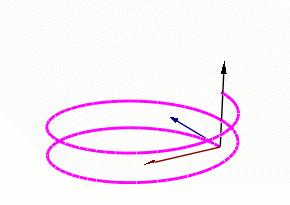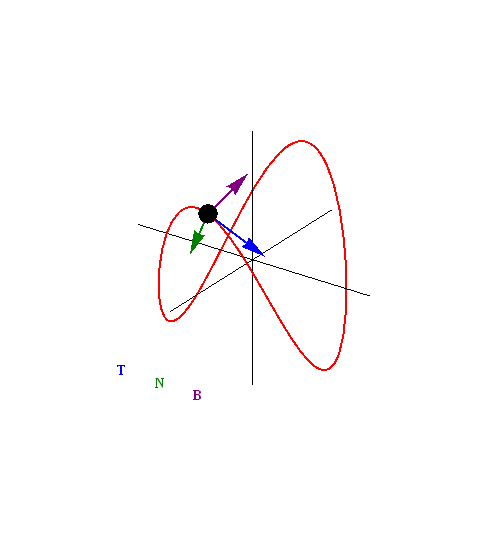Arclength Calculation
r(t) = Position at a time.
- To calculate distance, multiply Speed and Time
- Speed is the magnitude of velocity
- Distance (S), also known as arclength is equal to the integral of the magnitude of V, times dt (a tiny chunk at that time) from time 1, to time 2.
Frenet-Serret Frame (Moving Triad)
- This is a new coordinate system
- Made up of Unit Tangent (T), Unit Normal (N), and a perpendicular vector known as the Binormal (B)
- The Binormal is found by taking the cross product of T and N
-
Right hand rule applies here!
- Fingers along T
- Curl fingers towards N.
- Thumb points in direction of B
-
Another nice trick, is that N always points to the center of curvature.
- If T is going in a direction where the curve is increasing, N is facing up
- If T is going in a direction where the curve is decreasing, N is going down
-
Another unique thing about this coordinate system, is that T, N and B are all functions of time
-
T(t), N(t), B(t)
-
This coordinate system can warp with time


Black = B Blue = T Red = N
Acceleration
What’s cool about Acceleration along a curved path like such, is acceleration has two components
at = Transintestinal Acceleration an = Normal Acceleration
Acceleration
at = Transintestinal Acceleration
an = Normal Acceleration
Other helpful Frenet-Serret Stuff
V = Magnitude of Velocity (Speed) T = Direction of Unit Tangent (Direction)
- This is quite a rigorous proof
- Note, in the bottom, he does switch
a X vtov X a- Normally, this would switch the direction of the perpendicular product, but since we’re taking the magnitude, we do not care.
- A re-arrangement of the previous formula